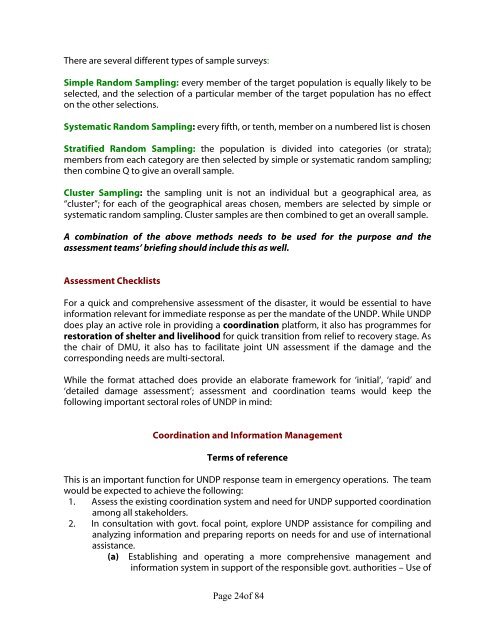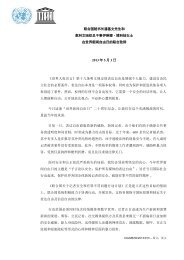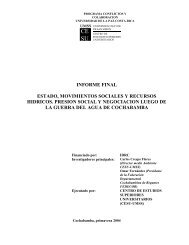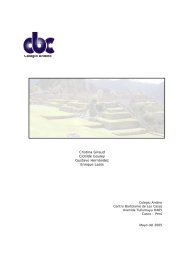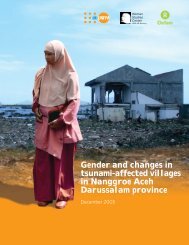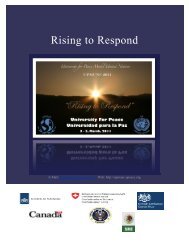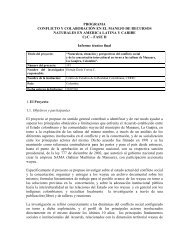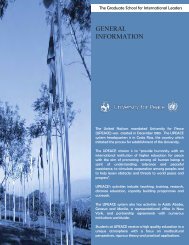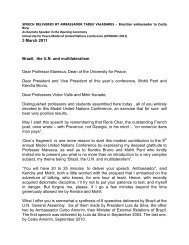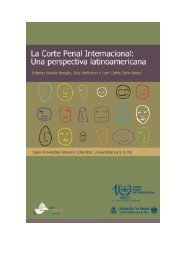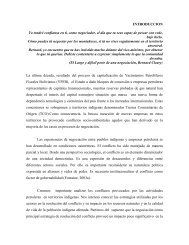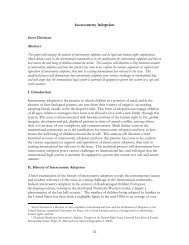UNDP India Disaster Preparedness and Response Plan
UNDP India Disaster Preparedness and Response Plan
UNDP India Disaster Preparedness and Response Plan
You also want an ePaper? Increase the reach of your titles
YUMPU automatically turns print PDFs into web optimized ePapers that Google loves.
There are several different types of sample surveys:<br />
Simple R<strong>and</strong>om Sampling: every member of the target population is equally likely to be<br />
selected, <strong>and</strong> the selection of a particular member of the target population has no effect<br />
on the other selections.<br />
Systematic R<strong>and</strong>om Sampling: every fifth, or tenth, member on a numbered list is chosen<br />
Stratified R<strong>and</strong>om Sampling: the population is divided into categories (or strata);<br />
members from each category are then selected by simple or systematic r<strong>and</strong>om sampling;<br />
then combine Q to give an overall sample.<br />
Cluster Sampling: the sampling unit is not an individual but a geographical area, as<br />
“cluster”; for each of the geographical areas chosen, members are selected by simple or<br />
systematic r<strong>and</strong>om sampling. Cluster samples are then combined to get an overall sample.<br />
A combination of the above methods needs to be used for the purpose <strong>and</strong> the<br />
assessment teams’ briefing should include this as well.<br />
Assessment Checklists<br />
For a quick <strong>and</strong> comprehensive assessment of the disaster, it would be essential to have<br />
information relevant for immediate response as per the m<strong>and</strong>ate of the <strong>UNDP</strong>. While <strong>UNDP</strong><br />
does play an active role in providing a coordination platform, it also has programmes for<br />
restoration of shelter <strong>and</strong> livelihood for quick transition from relief to recovery stage. As<br />
the chair of DMU, it also has to facilitate joint UN assessment if the damage <strong>and</strong> the<br />
corresponding needs are multi-sectoral.<br />
While the format attached does provide an elaborate framework for ‘initial’, ‘rapid’ <strong>and</strong><br />
‘detailed damage assessment’; assessment <strong>and</strong> coordination teams would keep the<br />
following important sectoral roles of <strong>UNDP</strong> in mind:<br />
Coordination <strong>and</strong> Information Management<br />
Terms of reference<br />
This is an important function for <strong>UNDP</strong> response team in emergency operations. The team<br />
would be expected to achieve the following:<br />
1. Assess the existing coordination system <strong>and</strong> need for <strong>UNDP</strong> supported coordination<br />
among all stakeholders.<br />
2. In consultation with govt. focal point, explore <strong>UNDP</strong> assistance for compiling <strong>and</strong><br />
analyzing information <strong>and</strong> preparing reports on needs for <strong>and</strong> use of international<br />
assistance.<br />
(a) Establishing <strong>and</strong> operating a more comprehensive management <strong>and</strong><br />
information system in support of the responsible govt. authorities – Use of<br />
Page 24of 84


